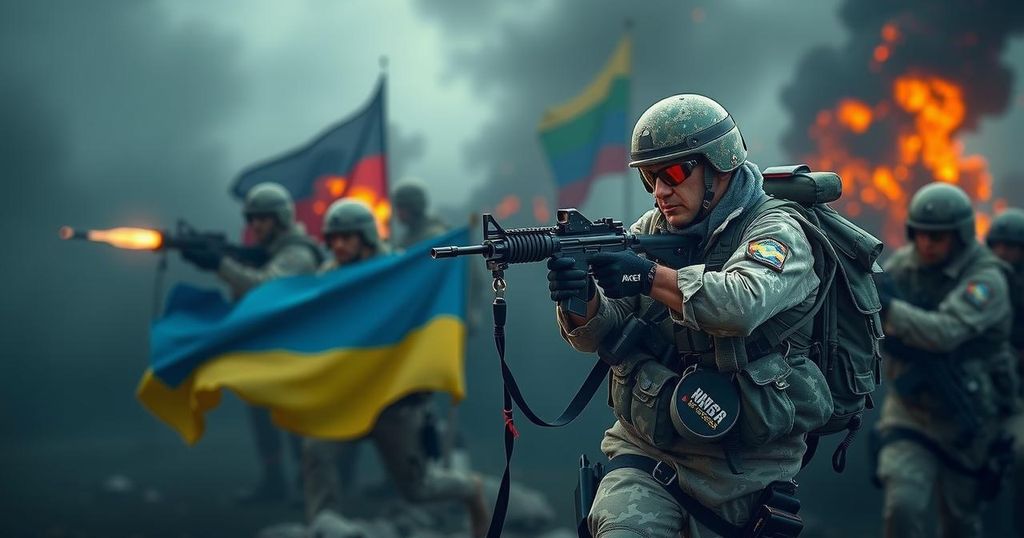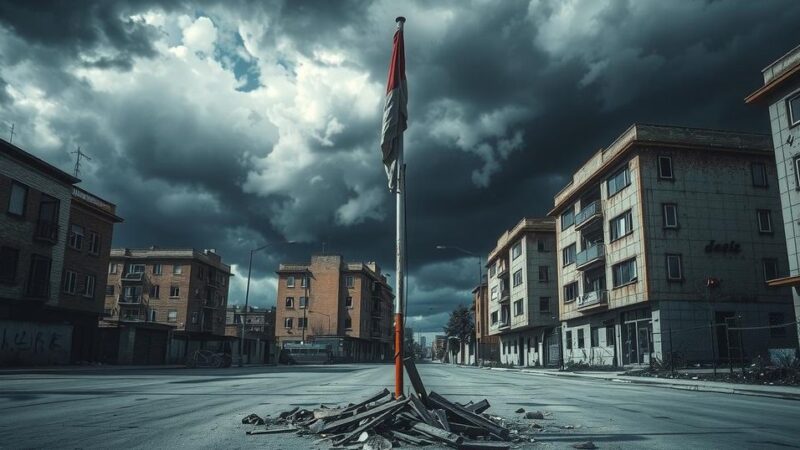Central Asian state media largely avoids significant coverage of Russia’s war in Ukraine, particularly in Turkmenistan, which has not addressed the conflict. Kazakhstan shows some divergence in its stance but still limits reporting amidst fears of offending Russia. Independent media outlets attempt to address the conflict but face censorship and repercussions from authorities.
Central Asian media outlets have demonstrated a stark reluctance to cover Russia’s invasion of Ukraine. State-controlled news services, particularly in Turkmenistan, have completely avoided any substantial mention of the conflict since its onset. This practice reflects a broader pattern within the region, where governments aligned with Russia tend to downplay or ignore the repercussions of the war, despite its tangible effects on local populations, such as the return of deceased soldiers to their home countries. Kazakhstan, Central Asia’s largest country and its only neighbor to Russia, has taken a somewhat bolder stance by avoiding recognition of territories Russia has taken in the conflict. Nonetheless, the state media tends to avoid discussing the war extensively. Recent reports from Kazakhstan’s state TV have highlighted environmental issues in Bolivia and health crises in far-off regions, while crucial developments from the Ukraine conflict remain unreported. Only during unique circumstances, such as the establishment of humanitarian support initiatives in Ukraine, has Kazakh state media engaged with the topic, leading to immediate backlash from Russian officials. In Uzbekistan and Tajikistan, state media has similarly sidestepped significant coverage of the war, focusing on other global matters. Kyrgyzstan’s state broadcaster is an exception to the trend, incorporating snippets from British news into their programming, although they mainly report on topics that cannot be ignored outright due to their prominence and gravity. Conversely, independent media outlets in the region report more comprehensively on the invasion, covering various angles, including grassroots reporting from the front lines. Such coverage can draw the ire of Russian authorities, resulting in censorship or retaliation, as experienced by the Kyrgyz news agency 24.kg after it reported on Ukrainian combatants. In response to perceived slanted reporting, Russian authorities have retaliated against several outlets by blocking access to their websites across the region. In the case of Turkmenistan, the regime maintains a strict information blockade, following a policy of total neutrality in international matters that mirrors practices from the Soviet era. The legacy of authoritarian control in media looms large, granting Turkmenistan a unique status, distinct from its neighbors regarding its media policies. Notably, the only Turkmen sources discussing the war are international, resulting in a total absence of local perspectives.
The article examines the media landscape in Central Asia regarding coverage of the Russia-Ukraine conflict. It highlights the pervasive censorship and avoidance of topics that may anger Russia among state-controlled media in Turkmenistan, Kazakhstan, Uzbekistan, and Tajikistan. Kazakhstan serves as a unique example, with its officials occasionally making bold statements about the war. Conversely, independent media provide varied coverage, often at the risk of sanction or retribution from Russian authorities. The analysis underscores the historical context of censorship in the region, illustrating how it has evolved from Soviet times to the present day.
In conclusion, Central Asian state media largely remain silent regarding the ongoing war in Ukraine, reflecting a calculated strategy to maintain favorable relations with Russia. This reluctance is evident throughout the region, with independent outlets attempting to fill the void but facing retribution for their efforts. The article ultimately portrays the media landscape as one that is heavily influenced by governmental oversight and fears of offending Russian authority, recalling the historical ties to Soviet-era practices.
Original Source: www.rferl.org






